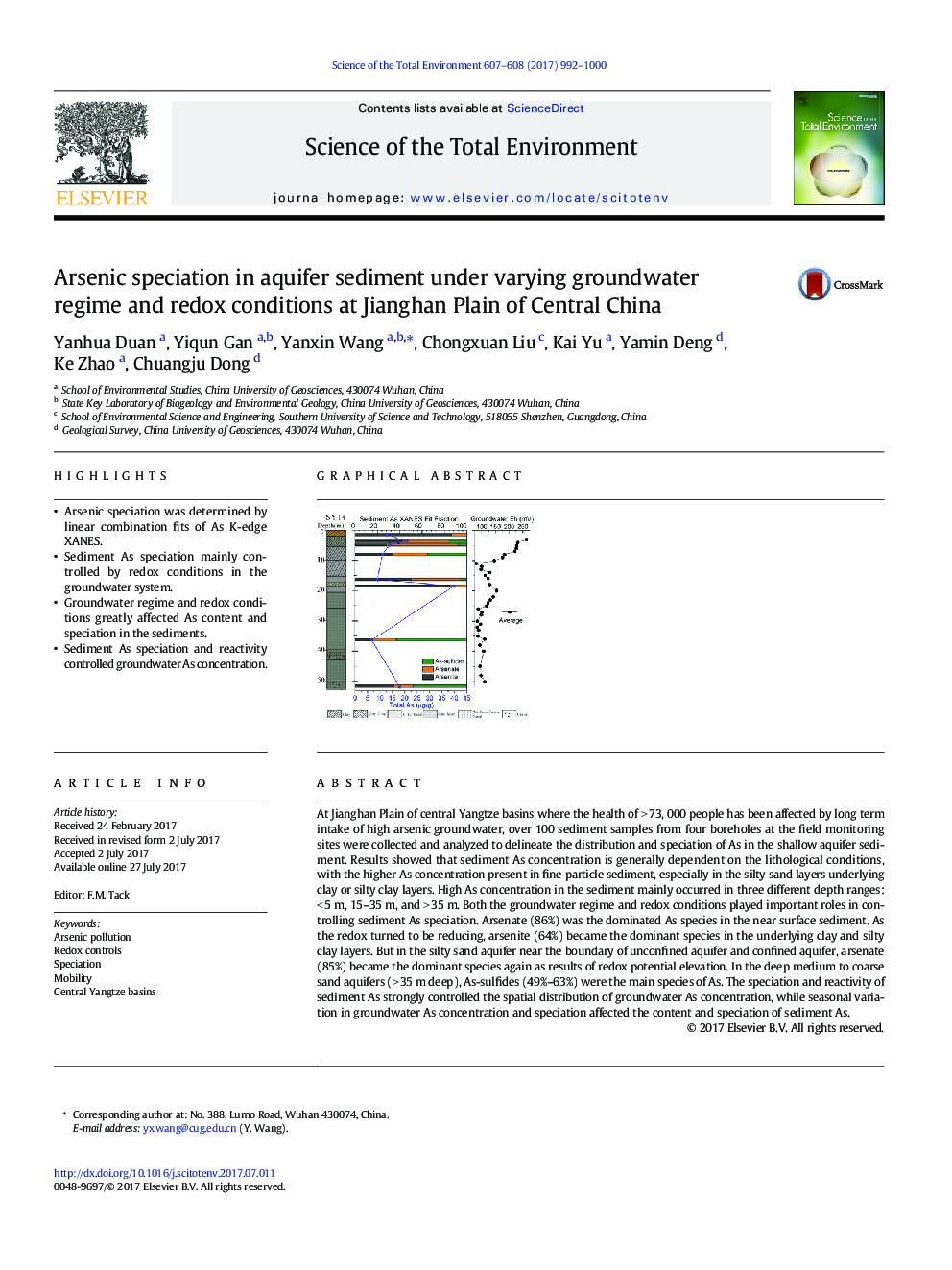| کد مقاله | کد نشریه | سال انتشار | مقاله انگلیسی | نسخه تمام متن |
|---|---|---|---|---|
| 5750057 | 1619694 | 2017 | 9 صفحه PDF | دانلود رایگان |
- Arsenic speciation was determined by linear combination fits of As K-edge XANES.
- Sediment As speciation mainly controlled by redox conditions in the groundwater system.
- Groundwater regime and redox conditions greatly affected As content and speciation in the sediments.
- Sediment As speciation and reactivity controlled groundwater As concentration.
At Jianghan Plain of central Yangtze basins where the health of >Â 73, 000 people has been affected by long term intake of high arsenic groundwater, over 100 sediment samples from four boreholes at the field monitoring sites were collected and analyzed to delineate the distribution and speciation of As in the shallow aquifer sediment. Results showed that sediment As concentration is generally dependent on the lithological conditions, with the higher As concentration present in fine particle sediment, especially in the silty sand layers underlying clay or silty clay layers. High As concentration in the sediment mainly occurred in three different depth ranges: <Â 5Â m, 15-35Â m, and >Â 35Â m. Both the groundwater regime and redox conditions played important roles in controlling sediment As speciation. Arsenate (86%) was the dominated As species in the near surface sediment. As the redox turned to be reducing, arsenite (64%) became the dominant species in the underlying clay and silty clay layers. But in the silty sand aquifer near the boundary of unconfined aquifer and confined aquifer, arsenate (85%) became the dominant species again as results of redox potential elevation. In the deep medium to coarse sand aquifers (>Â 35Â m deep), As-sulfides (49%-63%) were the main species of As. The speciation and reactivity of sediment As strongly controlled the spatial distribution of groundwater As concentration, while seasonal variation in groundwater As concentration and speciation affected the content and speciation of sediment As.
199
Journal: Science of The Total Environment - Volumes 607â608, 31 December 2017, Pages 992-1000
